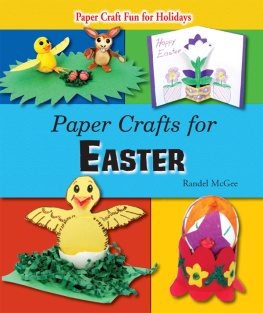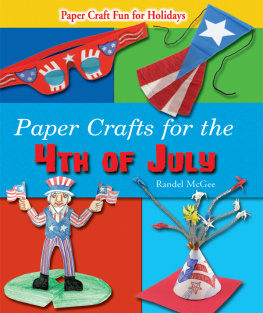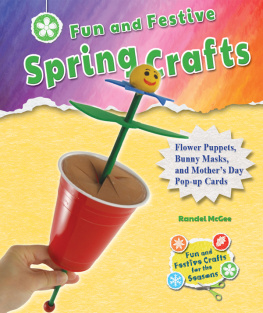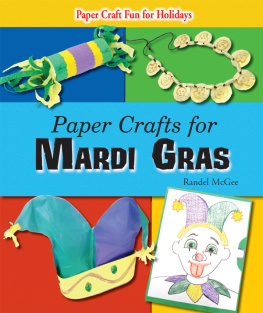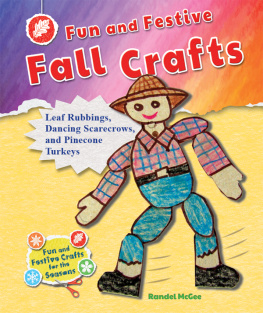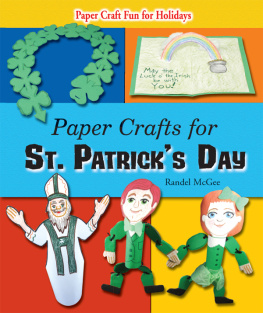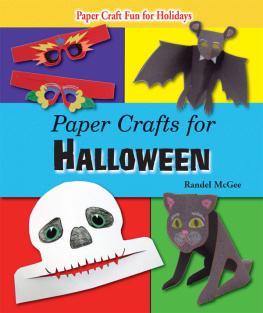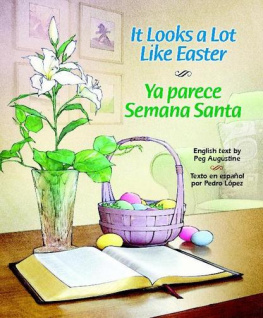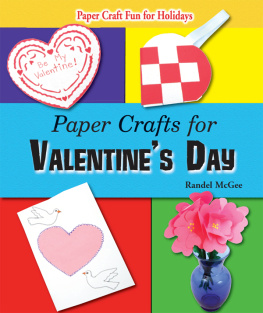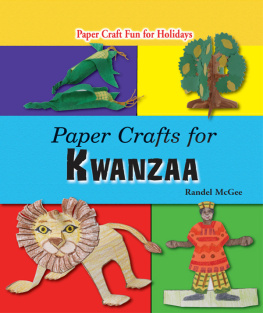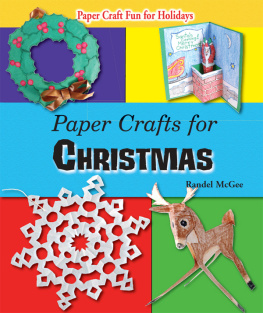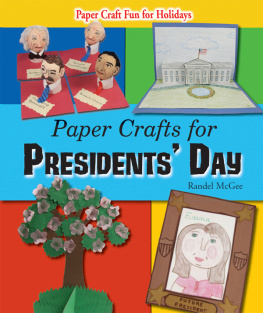BUNNIES! CHICKS! EGGS!
Coloring eggs is a fun thing to do for Easter. Make your own Easter egg stands to show them off! Join storyteller Randel McGee as he explores Easter in Paper Crafts for Easter. He will show you how to create pysanky eggs, bunny ears you can wear, paper stained glass windows, and more!
"Here's a chance to create some interesting and meaningful items to add to your Easter holidays. Learn how to make intricately designed Easter eggs (and why we have Easter eggs), or provide the family with some new place mats for the season."
Duncan R. Jamieson, PhD, Professor of History, Ashland University
"This book contains simple step-by-step activities using inexpensive materials. It will appeal to young children and children of all ages."
Patricia Leonard, Middle School Social Studies Teacher, St. Andrew School, Clifton, NJ
ABOUT THE AUTHOR
Randel McGee is a storyteller, puppeteer, ventriloquist, and paper-cutting artist. He performs all over the world, sharing his paper-cutting stories with children and adults.

Winter held the land in its icy grip, freezing the forests and fields. Eostre, a goddess full of light and life, used her powers to loosen winters hold over the land. She sent her messenger, the rabbit, to leave eggs around the homes of the humans as symbols of new life, to let them know that spring was on its way. Soon the land came to life again; leaves sprouted on trees, flowers bloomed, eggs hatched, and birds sang.
This is an ancient German myth about the coming of spring. The word Easter is based on the name Eostre. The rabbit or bunny and eggs became important symbols in Germany for the Easter holiday. Areas of Germany and eastern Europe are known for their elaborately dyed and painted Easter eggs. Children built little nests of grass in their caps or bonnets for the Easter bunny to place its eggs and treats, but soon baskets replaced the caps and bonnets.

German, Polish, and other European settlers to the United States brought with them their traditions of Easter rabbits, decorated eggs, and baskets of treats. During the late 1860s, many Americans started sharing in the fun traditions of their new European neighbors. Chocolate bunnies and eggs are now very popular treats to receive on Easter. More than ninety million chocolate bunnies are sold each year.
There are large Easter parades in many North American cities and contests for the most beautiful Easter hats or bonnets. Many North Americans celebrate Easter with rabbits, eggs, and flowers; wearing bright, new clothes; attending church services; sharing treats in the shape of rabbits, eggs, and chicks; having Easter egg-rolling races; and having Easter egg hunts. In 1876, President Andrew Johnson had an Easter egg hunt for his family outside the White House in Washington, D.C., the home of the president of the United States. A few years later, the White House started the annual tradition of sponsoring a special Easter egg hunt and egg-rolling race on the South Lawn. You will not need to hunt for fun ideas for decorations to help you celebrate Easter; just turn the page!
AUTHORS NOTE: Many of the materials used in making these crafts may be found by using recycled paper products. The author uses such recycled items as cereal boxes and similar packaging for light cardboard, manila folders for card stock paper, leftover pieces of wrapping paper, and so forth. This not only reduces the cost of the projects but is also a great way to reuse and recycle paper. Be sure to ask an adult for permission before using any recycled paper products.
The projects in this book were created for this particular holiday. However, I invite readers to be imaginative and find new ways to use the ideas in this book to create different projects of their own. Please feel free to share pictures of your work with me through www.mcgeeproductions.com . Happy Crafting!
Pysanky (PEH-san-keh) is the art of decorating Easter eggs from the eastern European countries of Poland and the Ukraine. Traditionally the eggs are decorated in a long process that uses dyes and beeswax. Using tissue paper is easier and can give beautiful results. The colors used have special meanings: white = purity and light, yellow = sunshine and warmth, orange = strength, green means springtime and life, red = charity and hope, blue = the skies and truth, and purple = faith.
- a hollowed egg or plastic egg
- pencil
- tracing paper
- tissue paper in various colors
- scissors
- white glue
- permanent marking pens

1. Use a hollowed real egg or plastic egg for your project.
Note: Have an adult help you if you hollow a real egg. Use a large sewing needle to poke a small hole in the small end of the egg. Poke a larger hole, about the size of a pea, in the large end of the egg. Have an adult blow against the small hole until the egg white and yolk are forced out the larger hole in the bottom. Save the egg white and yolk in a bowl for use in cooking. Rinse the hollow egg with water and let it dry on a paper towel.
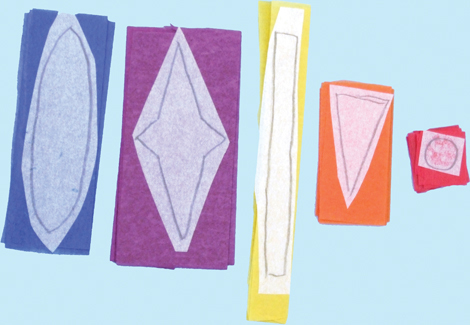
2. Use a pencil and tracing paper to transfer the patterns to the tissue paper. Cut several shapes from different colors of tissue paper to decorate the egg.

3. Use a little white glue to fasten the colored tissue paper designs on the egg in patterns as you wish. Let dry.
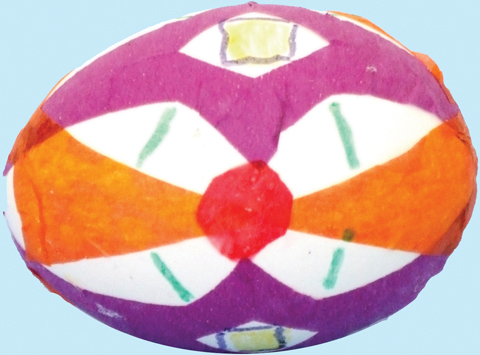
4. Use permanent marking pens to add little lines and borders to the colored tissue paper.
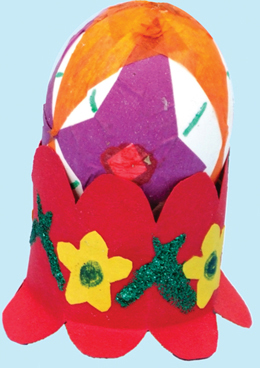
5. Place your pysanky egg on an Easter egg stand. (See on how to make an egg stand.)
Easter eggs can be very beautiful, but they are also fragile. You may want to display your specially decorated eggs in a way that will keep them from getting cracked accidentally. You need an Easter egg stand to hold up your special egg for all to see.
- toilet tissue tube
- scissors
- pencil
- tracing paper
- construction papervarious colors
- white glue
- glitter glue
- markers or crayons
- sequins or craft jewels (optional)
- decorated eggs

1. Cut the toilet tissue tube into one-inch lengths.

2. Use a pencil and tracing paper to transfer the base patterns from to the construction paper. There are different base patterns that you may choose from.

